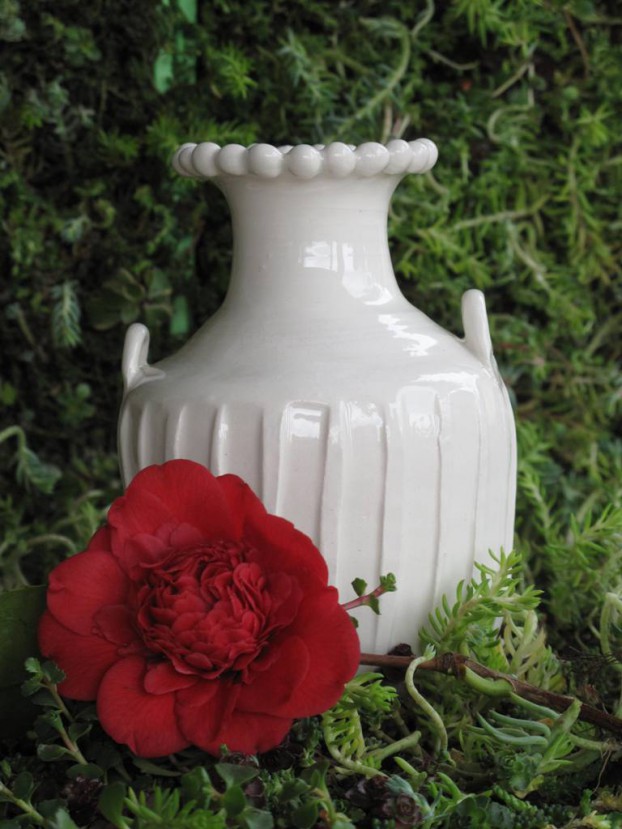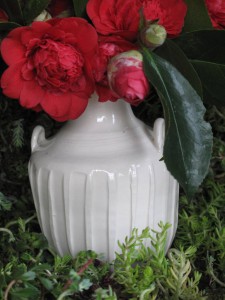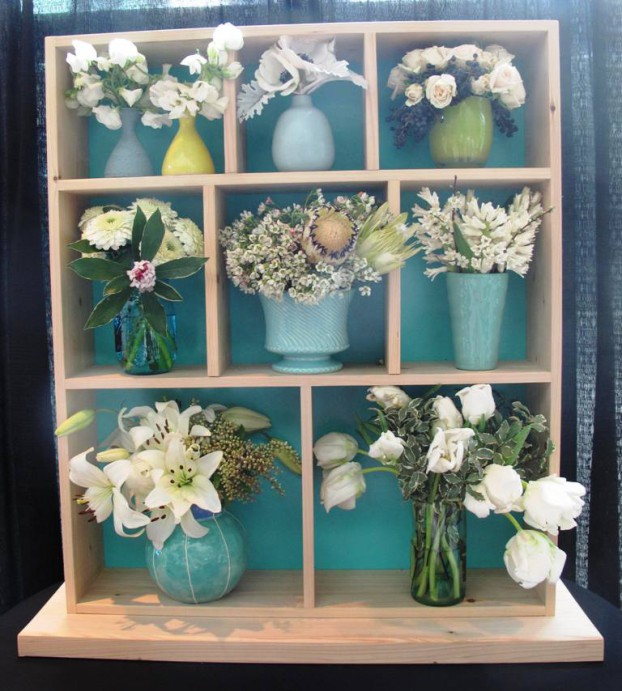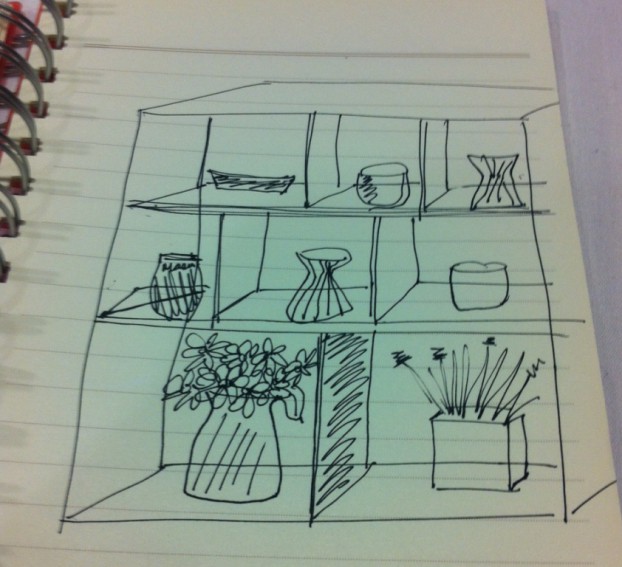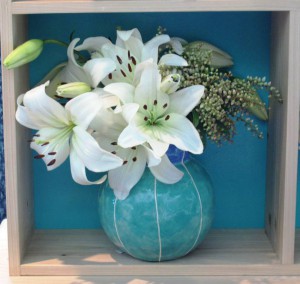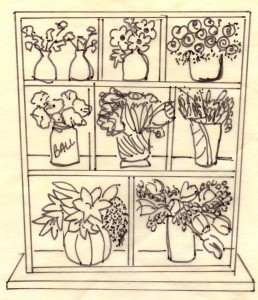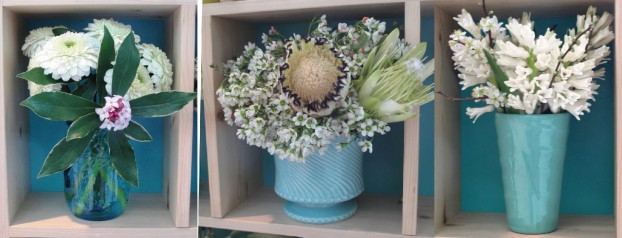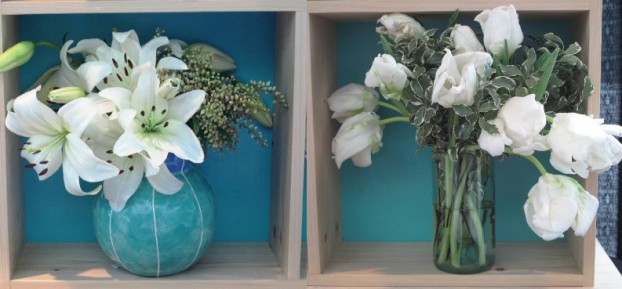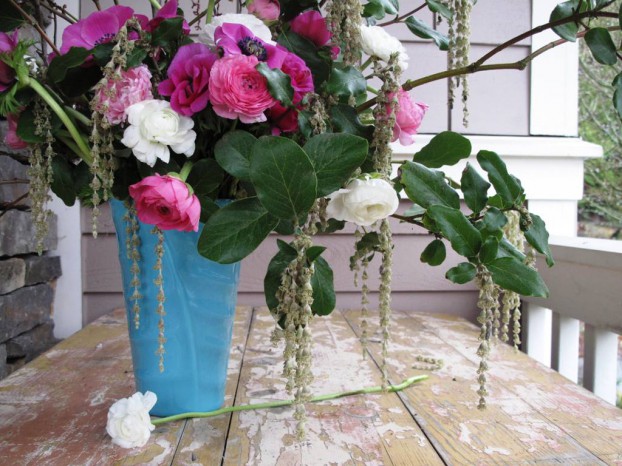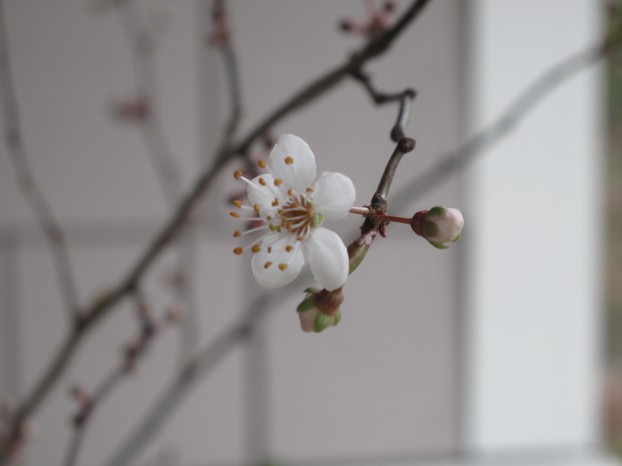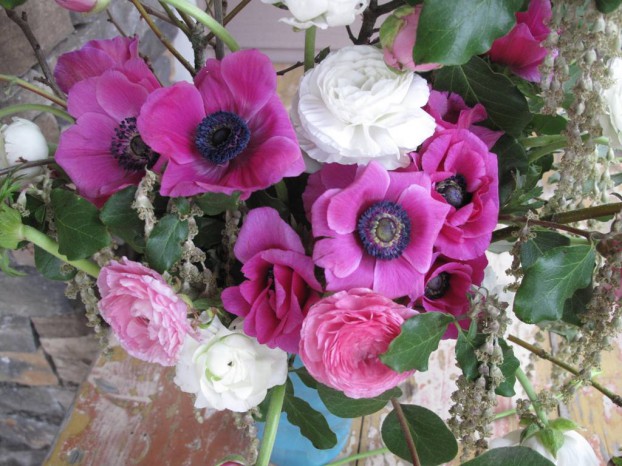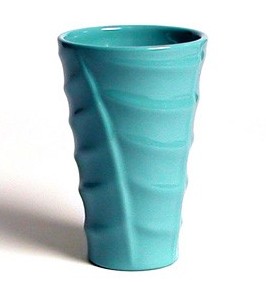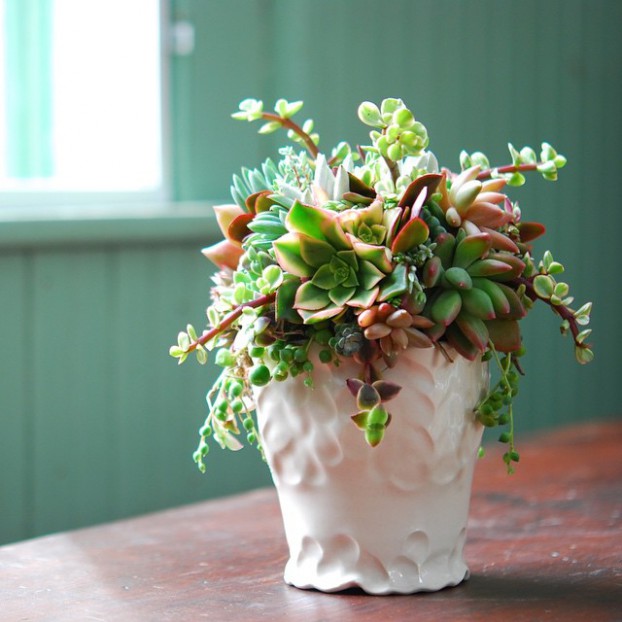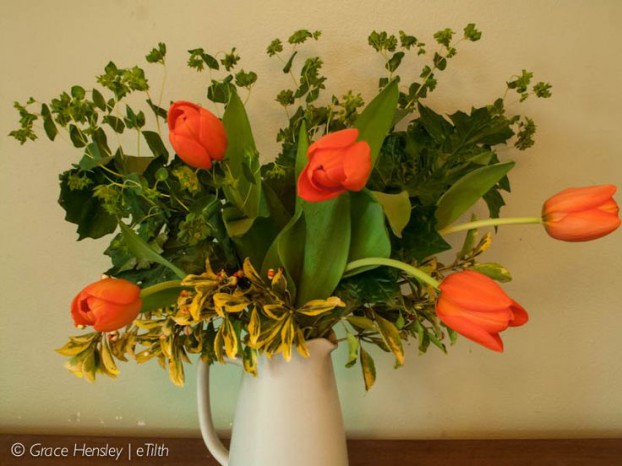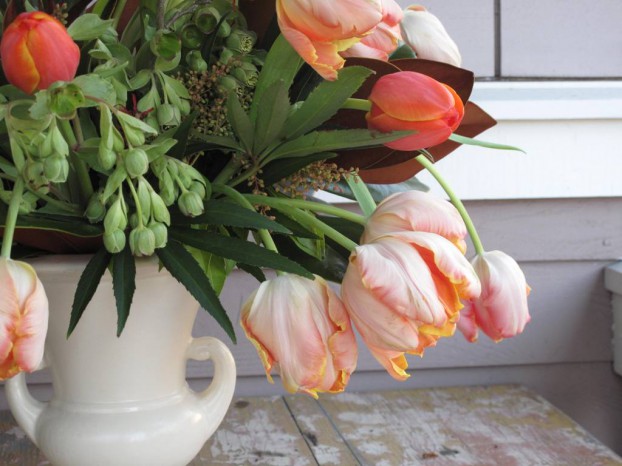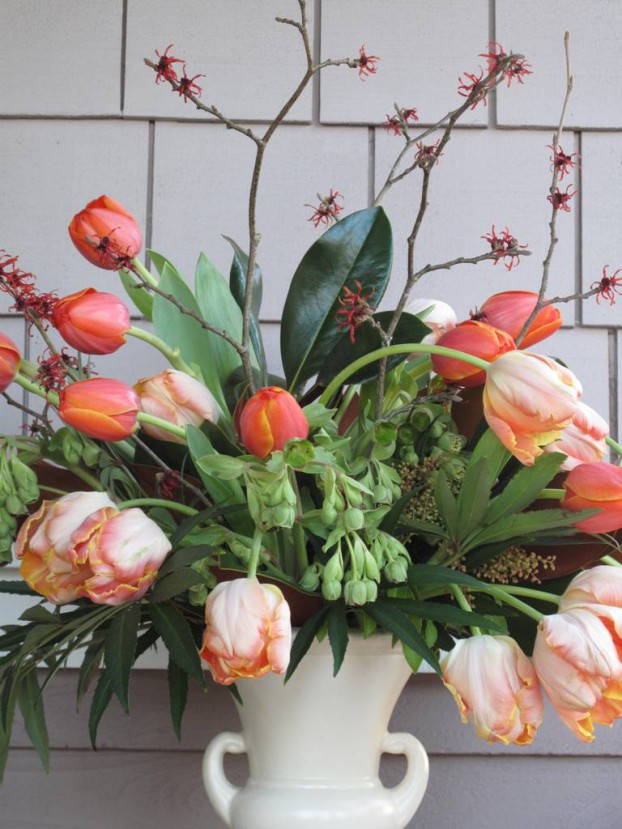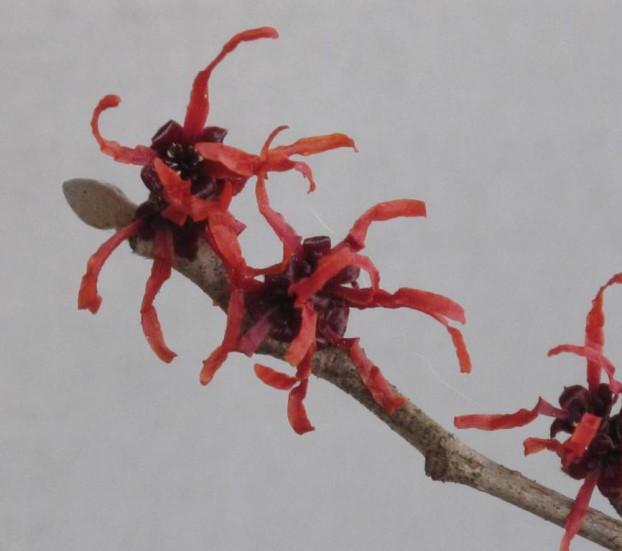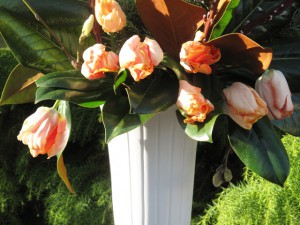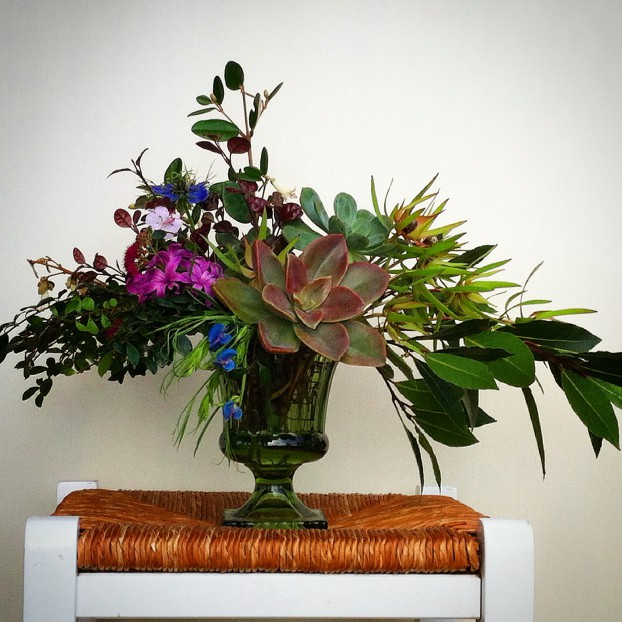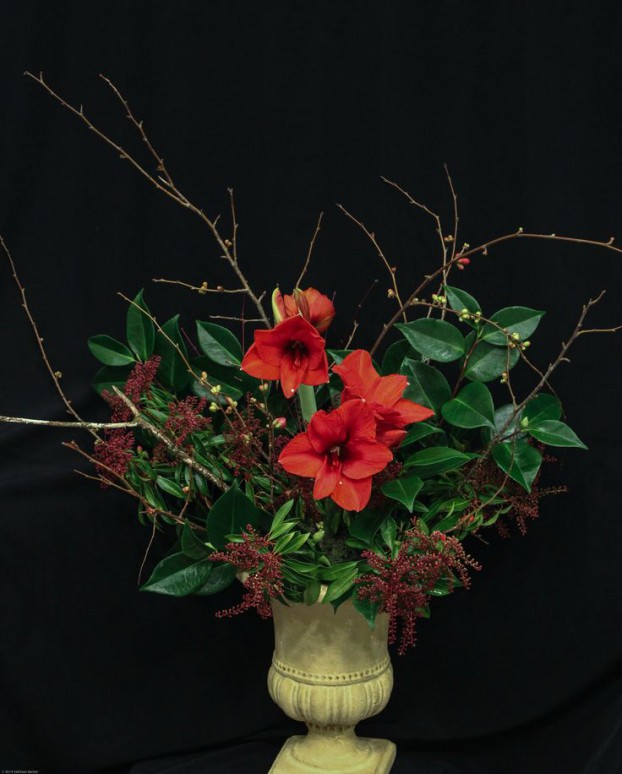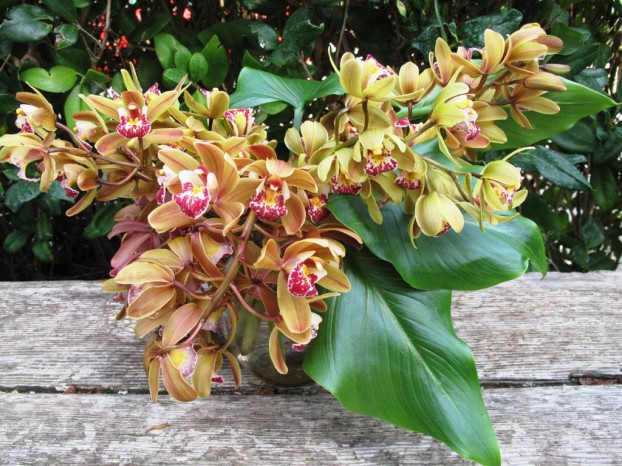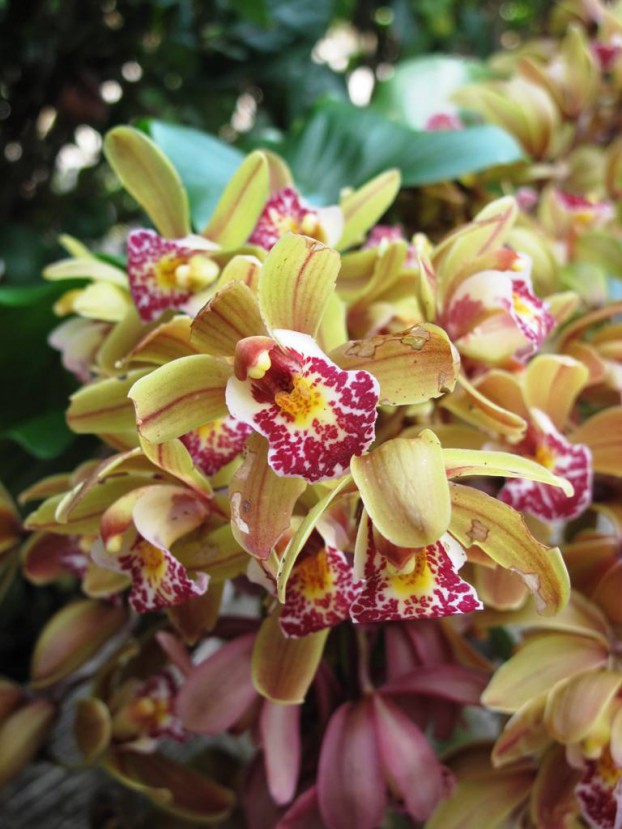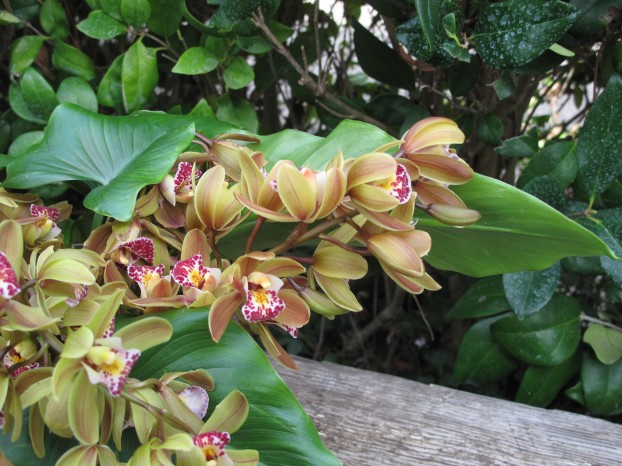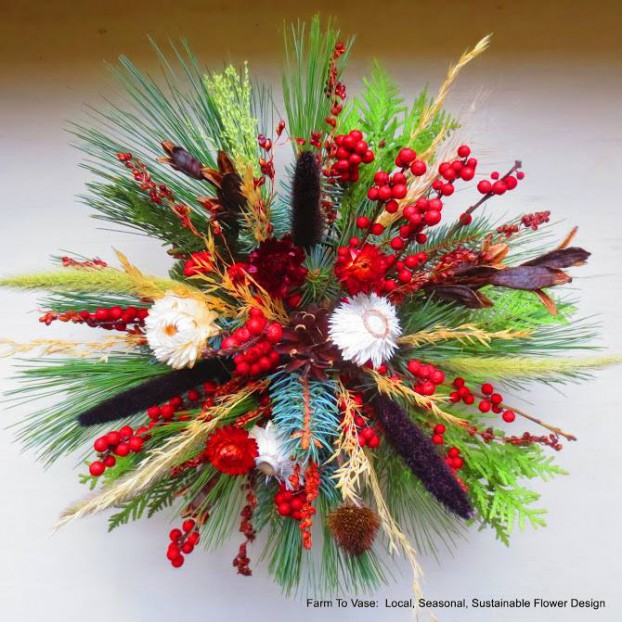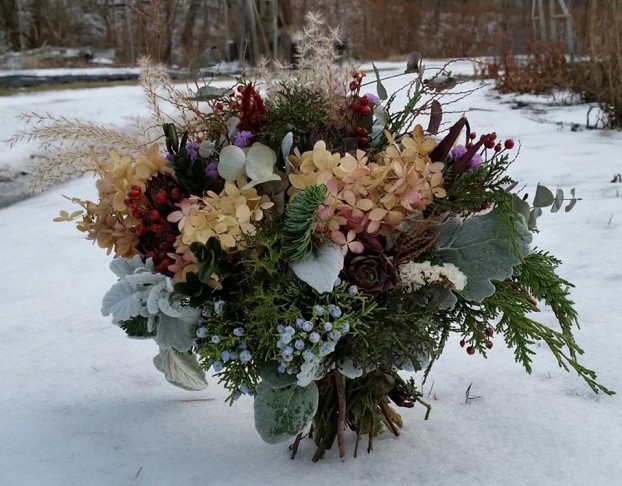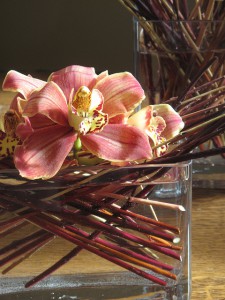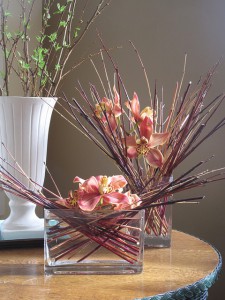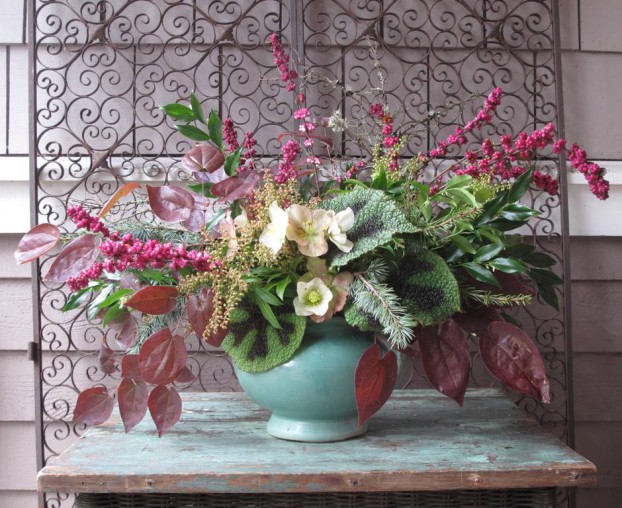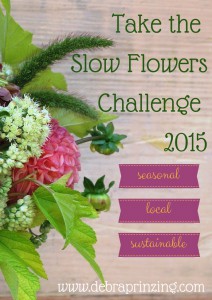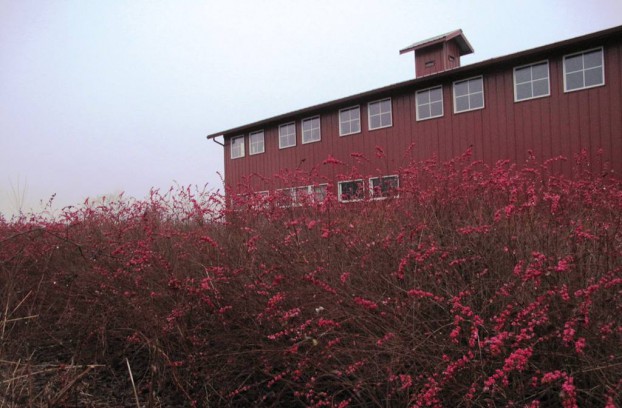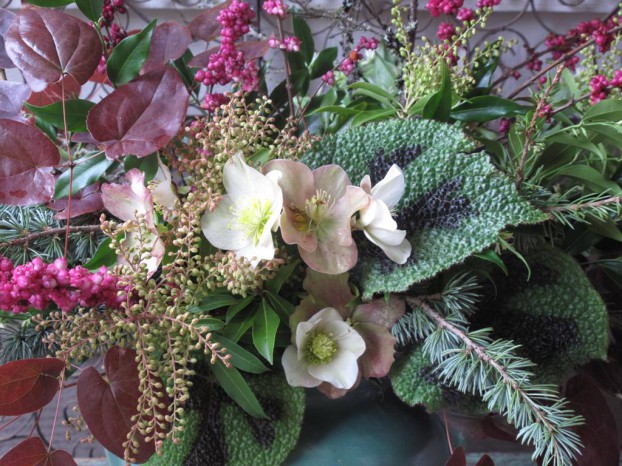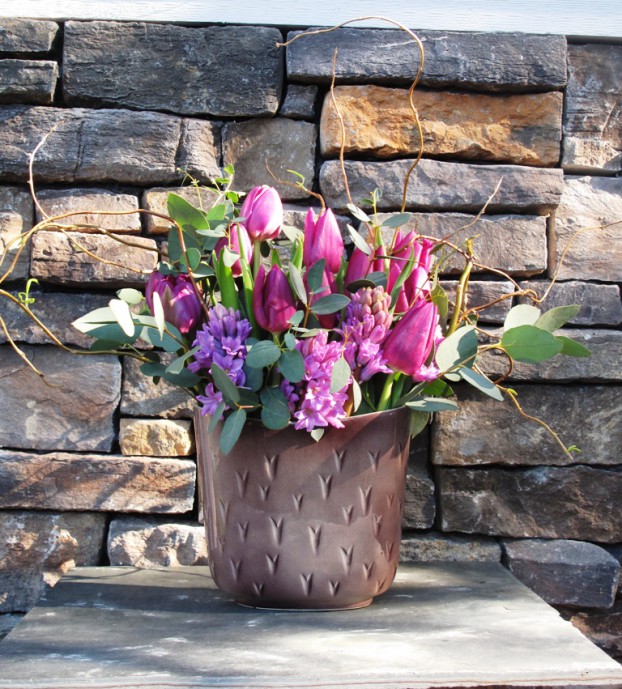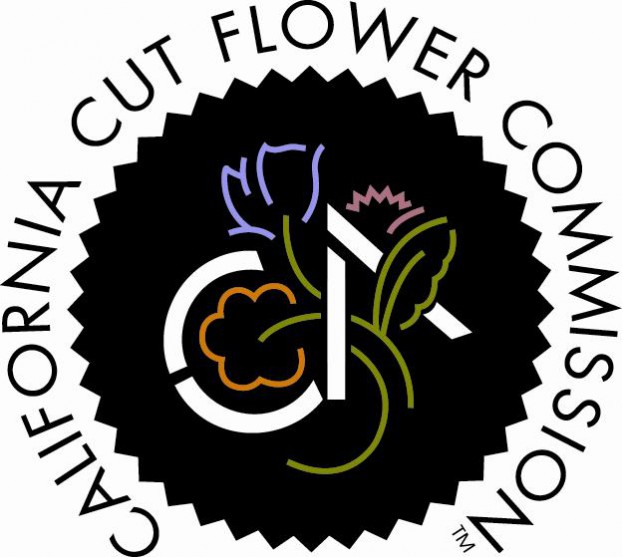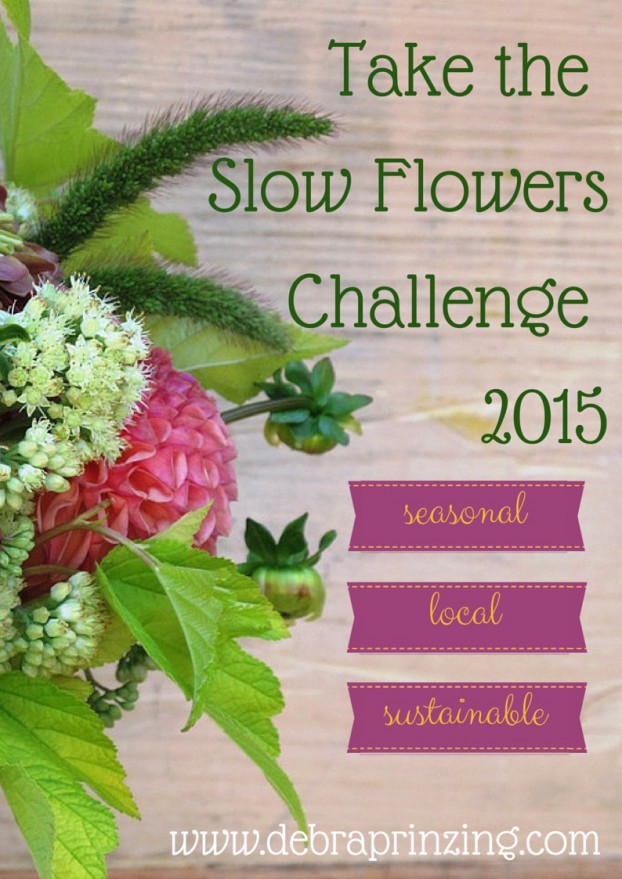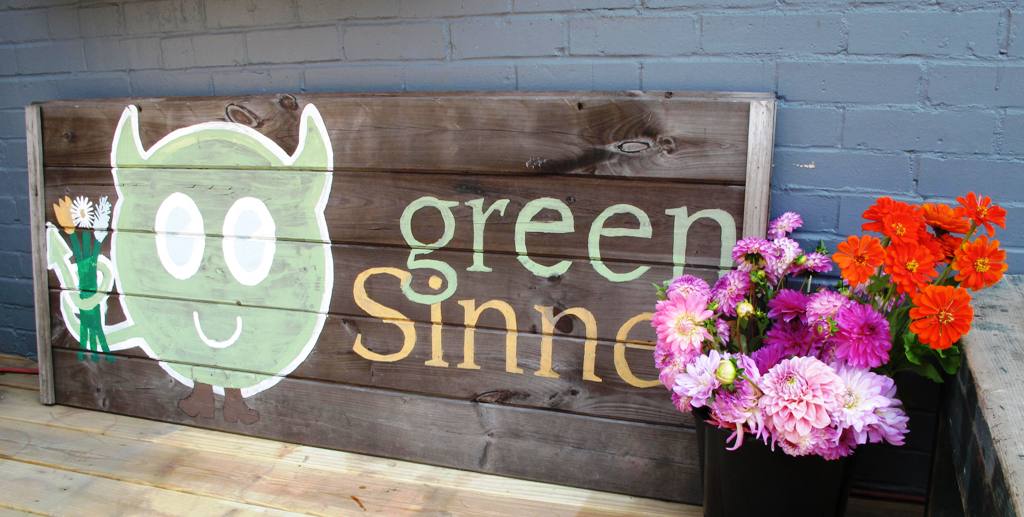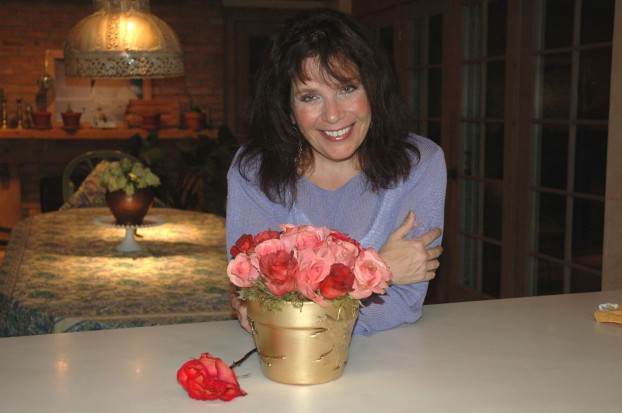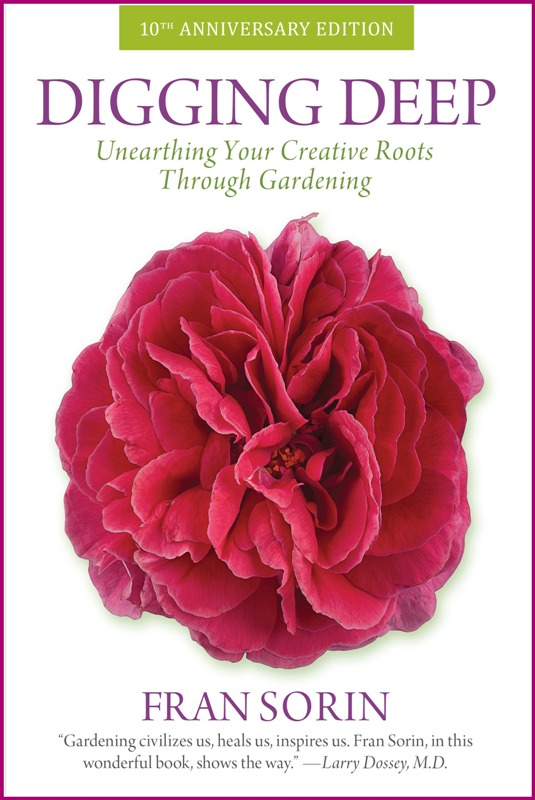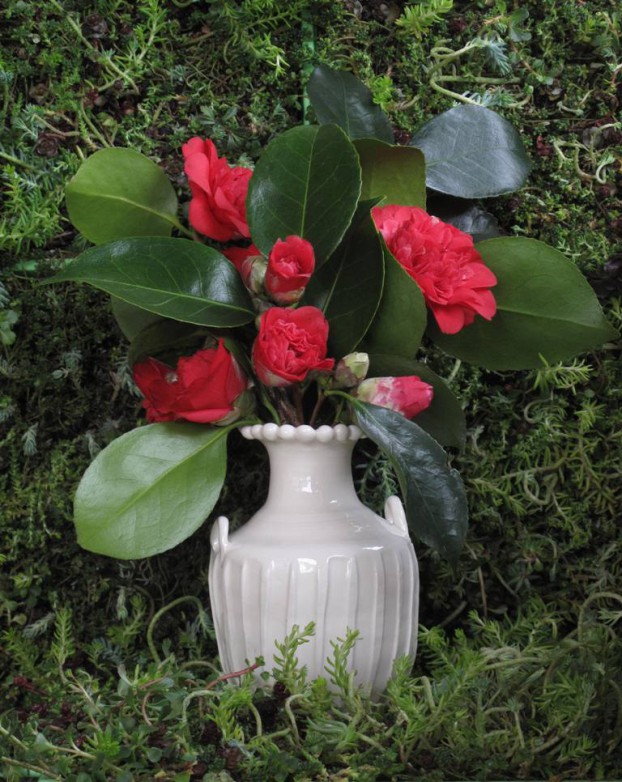
Red garden camellias (Camellia japonica) and glossy green foliage look stunning as a single variety in my Valentine’s Day vase. I believe this is called the ‘anemone’ form, but the cultivar is unknown.
Welcome to Week 7 of the Slow Flowers Challenge!
My wonderful husband and our two sons gave me this beautiful vase for Valentine’s Day. It is a one-of-a-kind bud vase by Frances Palmer, a Connecticut-based ceramic artist whose work I admire greatly.
Prior to Valentine’s Day, Frances Palmer Pottery released a special limited edition collection of handmade white ceramic bud vases. There were only 36 in the series, so I knew they would go quickly. I hinted not so subtly to Bruce, asking if he would consider selecting one of the vases as my gift. When I opened it on V-Day, the card read: “Your wish is our command,” love Bruce, Benjamin and Alex.
I can’t think of a better gift for a flower-lover than an extraordinary vase in which to display favorite, seasonal stems – from the garden or the flower farm.
By now, you may realize I am obsessed with American-made vases as ideal vessels for containing American-grown flowers. When you know who the artisan or maker is behind the vase, it heightens your appreciation for that object.
We gain similar appreciation when we know the story of the flowers, including the farmer who grew those stems.
In this case, my camellias are straight from the landscape. I live in a community of four houses – three are only 10 years old, including mine; one is from the 1950s. The landscape here is mature and I’m guessing this camellia dates back to the era when the first home here was built. It is tree-like in scale, prolific in bloom, and provides a distinct vegetative “screen” to the southern perimeter of our property.
As you may know, camellias aren’t long-lasting cut flowers. But over the years, I have found two things about camellias:
1. When they are cut in bud or only partially open, the flowers do last longer in the vase; and
2. When you have such an abundant source of flowers, you simply replace the spent blooms whenever you wish, at least during the four-week period when camellias are at their peak.
Back to our artist. Here is a statement from Frances Palmer’s web site, which tells a little more about her philosophy:
I don’t make or grow things to hold onto them, but rather to send them out into the world for others to live with and enjoy. My handmade ceramics are functional art – dishware or vases that can be used on a daily basis. Each piece, no matter how large or small, is considered and individual.
I am honored and happy to think that people across the USA are using my work when they gather in friendship to share a meal and good times.
More from Slow Flowers
Design 101: A very special vase.
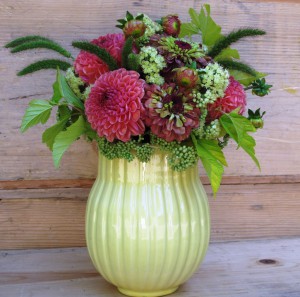
“Summer Confections,” from my book, Slow Flowers. This design features local flowers with a Frances Palmer vase.
I was first introduced to the work of Frances Palmer when Stephen Orr profiled the American potter and her Connecticut cutting garden in Tomorrow’s Gardens. Then Frances appeared on Martha Stewart’s television show, where she discussed how she creates her exquisite one-of-a-kind vessels and dinnerware, including vases for the flowers she grows. Her delightful pottery style – classical with a touch of whimsy – is a floral designer’s dream come true.
Naturally, I set my sights on acquiring one of Frances’s pieces. I chose this fluted vase because of the generous diameter of its opening (nearly 5 inches). And to me, this butter-yellow glaze is a perfect foil for all sorts of flowers, but especially the zinnias and dahlias.
If you want to learn more about Frances Palmer, I recommend listening to this fabulous interview of her by Design*Sponge’s Grace Bonney on her “After the Jump” podcast.









